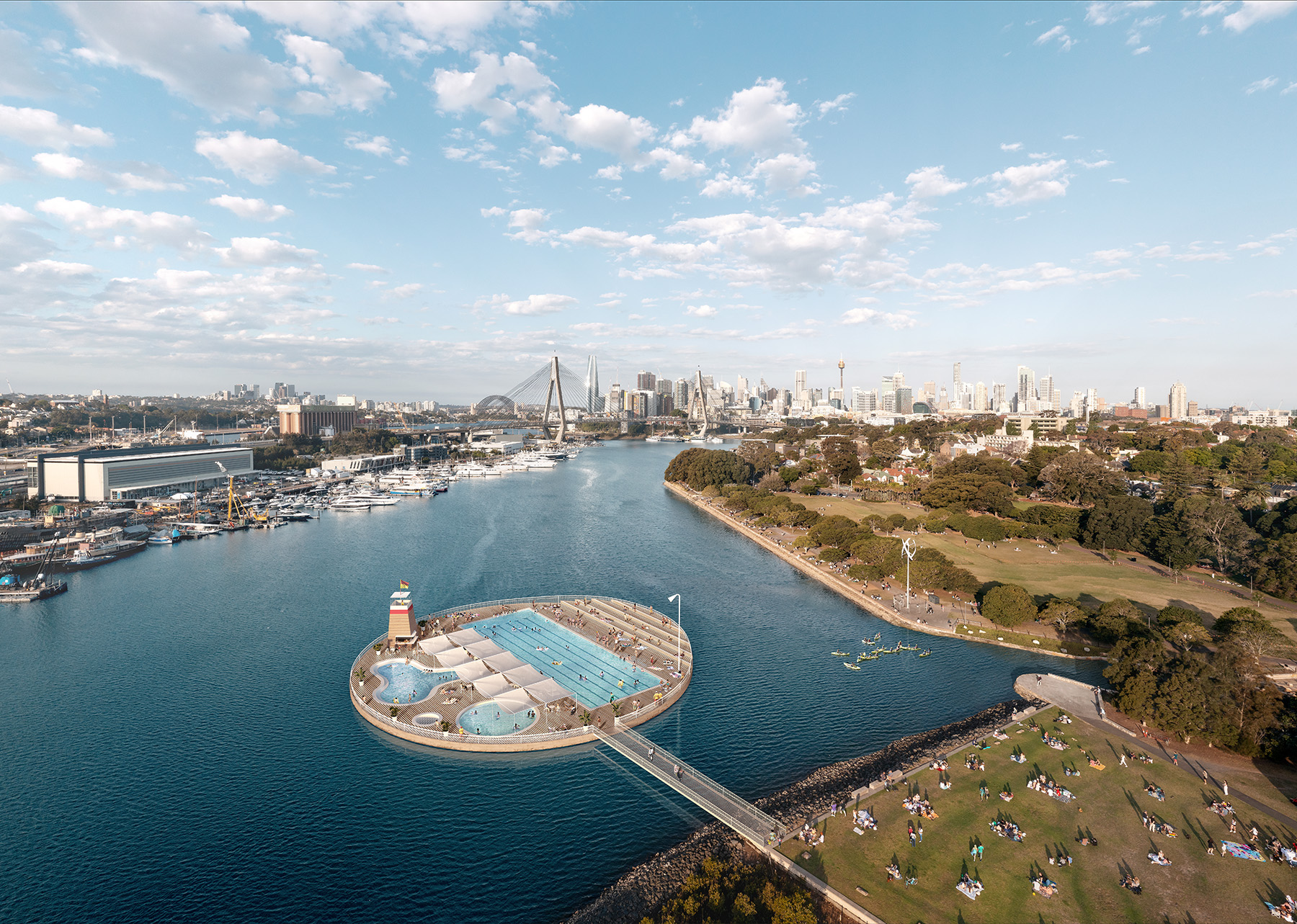
By Catherine A. Cardno, Ph.D.
At the request of Lord Mayor Clover Moore and the city of Sydney, Andrew Burges Architects of Surry Hills, Australia, has created visual plans for a series of swimming pools on a human-made island within Greater Sydney Harbour. The plans are a hypothetical representation of what could be possible, over time, if the water quality in the harbor is improved, according to a city spokesperson.
The circular, human-made island would be accessible from shore via a bridge. The island would sit within the harbor and include a lap pool and three additional pools for recreation. Shading and amphitheater seating, as well as plenty of decking and a lifeguard station, round out the potential public space.
However, the island is just one of the proposed ways to bring swimming to the harbor; the other would be to convert two existing areas with water-access points.
The harbor and its iconic Sydney Opera House offer some of the world’s most recognizable views. The harbor itself is an ecologically diverse body that stretches from its upper tidal limits on the Parramatta River downstream to the ocean entrance between North and South Head, with a watershed where just over 3 million people live. That number is projected to grow to 4.35 million in the next two decades.
The harbor is impaired by industrial pollution. Most of the sediment contamination occurred prior to 1970 as a result of poor industry regulation, according to Moore.
“A whole government approach” is necessary to make the harbor swimmable, Moore says. To this end, water recycling and stormwater management efforts such as the installation of gross pollutant traps, rain gardens, wetlands, and swales are underway in the stormwater catchment area.
“Over the next 30 years, the population of Sydney will dramatically increase, with the climate also expected to change,” Moore says. “Our city will be hotter, there will be more people, and there will be more competition for space for recreation. Turning the harbor into a safe place where people can swim, exercise, or relax is the logical next step.”
Catherine A. Cardno, Ph.D., is the managing editor of Civil Engineering Online.
This article first appeared in the May/June 2022 issue of Civil Engineering as “In the Water, on the Water.”



